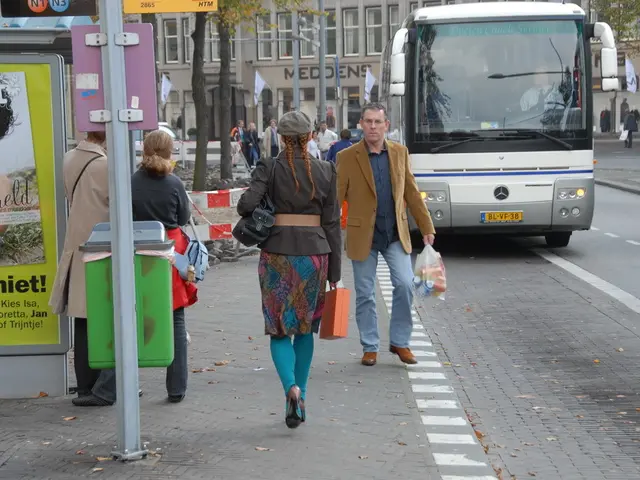Rising HIV cases becoming a significant concern across Eurasia
A Tale of Lena and the rising HIV cases in Eurasia
Meet Lena, a 55-year-old resilient woman hailing from Pavlodar in Kazakhstan. Lena battled a 20-year drug addiction, recounting, "I'd fall asleep - it's winter, wake up - summer." Unfortunately, her story isn't unique in Eurasia, where drug-related HIV infections are skyrocketing.
The Uneasy Rise
Eurasia witnessed a staggering 20 percent surge in new HIV cases over the past 13 years, with over 140,000 new cases in 2023. Notably, Kazakhstan, Russia, Ukraine, and Uzbekistan account for 92 percent of these diagnoses. UNAIDS, the United Nations AIDS program, reported that unsafe injections among drug-users are a leading cause of these HIV infections, accounting for one-quarter of the region's new infections [1].
The Region's Struggle
Despite global progress in curbing HIV transmission, Eurasia is bucking the trend. With only half of the 2.1 million HIV-positive individuals in the region receiving antiretroviral therapy, and just 42 percent having a suppressed viral load [2], the region ranks lowest in the world in this regard.
Experts argue that restrictive laws, aggressive policing, and the stigma surrounding HIV are accelerating the uptick in cases. Lena emphasizes the urgent need for more widespread access to "HIV prevention services" and treatment.
Barriers to Care
Stigma and discrimination prevent many drug users from seeking medical help. Startlingly, 49 percent of injecting drug users in Kyrgyzstan, and 32 percent of people living with HIV in Tajikistan, have avoided medical care due to this [3].
Addressing the Issue
Breaking down the barriers of stigma and discrimination is essential. Winnie Byanyima, UNAIDS Executive Director, stresses, "The barriers of stigma and discrimination need to be broken down." Meanwhile, initiatives like the mentoring program where Lena works empower those affected by HIV to make a difference [3].
While resources allocated for prevention programs for "key populations" only constitute 12 percent of the total [2], their impact cannot be underestimated. Lena sincerely believes, "I am reborn from this work."
Factors and Solutions
- Criminalization of HIV Transmission: Encouraging policy changes to decriminalize HIV transmission can reduce stigma and increase access to services [4].
- Economic and Social Challenges: Formulating policies to address poverty, unemployment, and lack of access to healthcare is vital in preventing HIV transmission [5].
- Drug Use and Sharing of Needles: Implementing harm reduction strategies, such as needle exchange programs, can mitigate the risk of HIV transmission [5].
- Awareness and Education: Awareness campaigns that destigmatize HIV/AIDS and educate drug users about the risks and benefits of testing and treatment are crucial [4].
- Amid the rising HIV cases in Eurasia, the need for science-based solutions and effective policies is increasingly evident.
- The escalating number of chronic diseases and medical-conditions, such as HIV, underscores the importance of health and wellness initiatives in the region.
- In light of the surge in drug-related HIV infections, it is crucial to focus on mental health support for those affected by addiction and the stigma surrounding HIV.
- As war and conflicts continue to displace populations, emphasis on health-and-wellness, including HIV awareness, becomes vital with migration.
- In the general news landscape, stories such as Lena's serve as reminders of the need for comprehensive policy-and-legislation addressing various health issues, including HIV transmission and prevention.
- Fitness and exercise can play a vital role in supporting the overall health and immunity of individuals at risk of HIV or living with the condition.
- Crime-and-justice systems should prioritize education and rehabilitation over harsh punishments for those with HIV, as stigmatizing the disease may exacerbate the problem.
- Global health agencies like UNAIDS and local initiatives, such as Lena's mentoring program, are essential in supporting individuals living with HIV, addressing the root causes of the epidemic, and promoting fitness-and-exercise, health-and-wellness, and mental-health in Eurasia.








